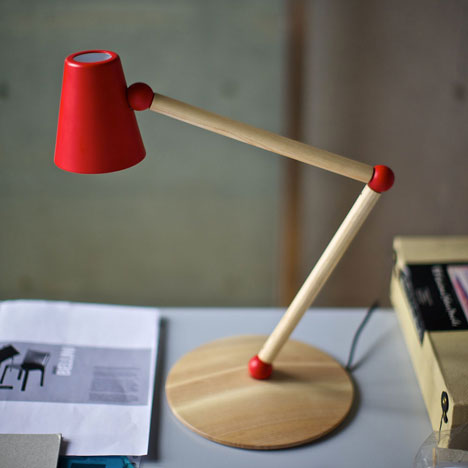
"Without curiosity you cannot create things" - Mario Bellini
Dezeen promotion: design brand Discipline spoke to Italian architect and designer Mario Bellini about his curiosity for objects and materials as part of the Living With series of interviews with influential creatives (+ transcript).
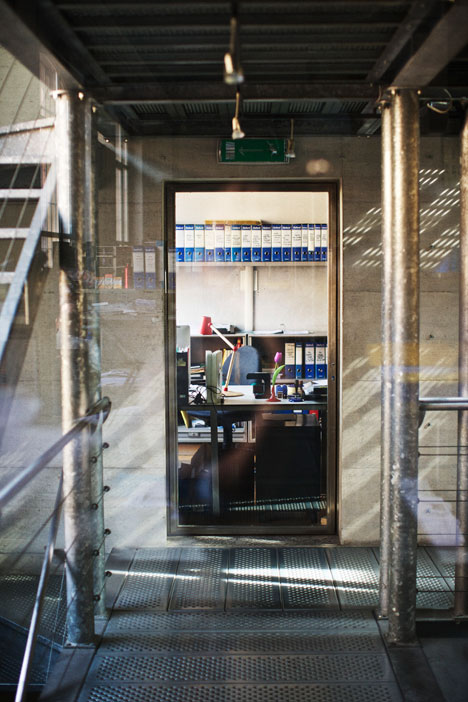
The Living With project aims to encapsulate the creative processes of designers and creative individuals through discussions about their interests, habits and studio environments, plus photographs of their workspaces by Paul Barbera.
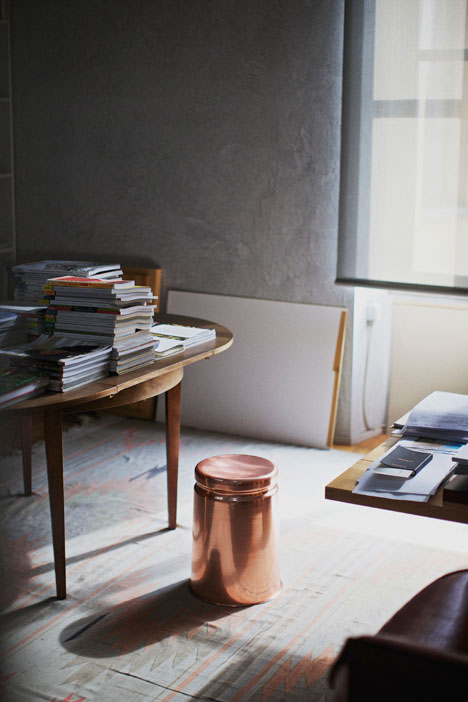
Discipline hopes that these conversations and records will give insights into the personalisation of space, and how colours, textures and natural materials are used in daily routines.
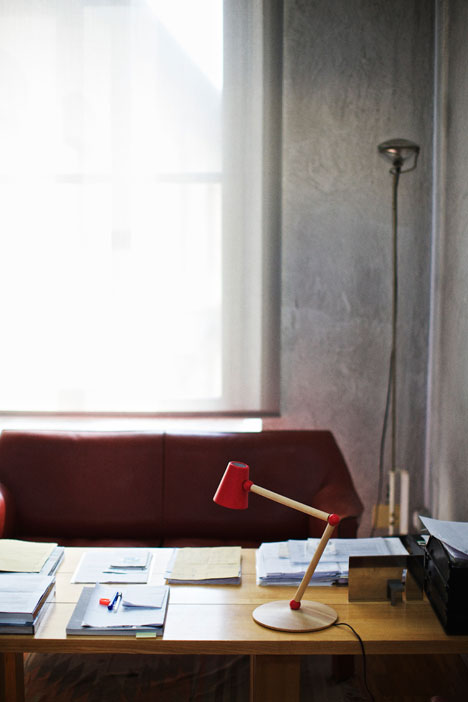
For this instalment of the project, Mario Bellini talked about how he can work anywhere as long as he is constantly involved in the designs his office produces. "To work I only need to have a pencil and a piece of paper, but I sit anywhere the person who is taking care of the project sits," he said.
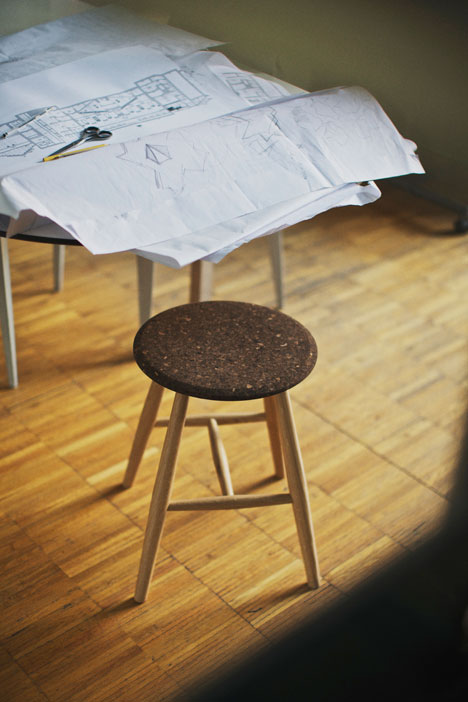
He also discussed his curiosity for materials and objects, which enables him to move freely between different design scales. "It feels natural to design a tray in the morning and to work on a huge building in the afternoon," Bellini said. Scroll on for the full transcript.
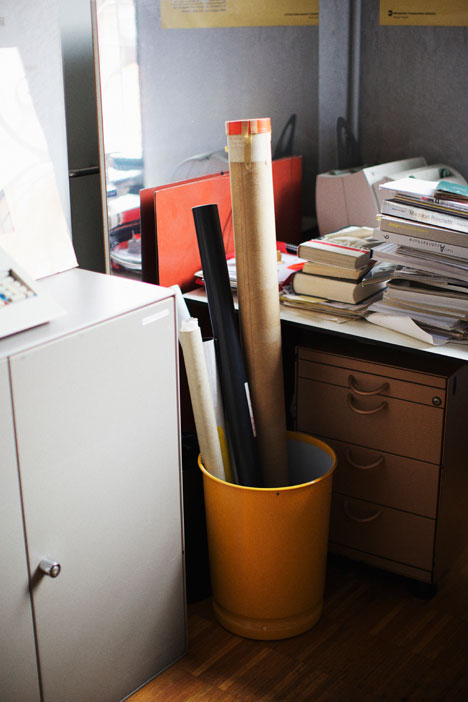
To find out more about the Living With project and keep up with past and future editions, visit Discipline's website. Images show a range of Discipline products in a studio environment.
Read on for more information and the full interview:
How many ideas of living exist nowadays?
Giving an answer can be straightforward and elaborate at the same time – as many as the number of people living on our planet. The number grows even larger if we start counting offices, working spaces or simply the desks many of us individualize. The particular and whole blends in together, recounting the fragments making up our personal stories; sharing information on how we live and what we surround ourselves with. How we perceive harmony and beauty in everyday life. What gives us energy and rhythm, making us feel good while keeping us company. Ultimately, discovering what materials and colours we love, the daily routines and habits which make us unique.
Living With is the new project by Discipline telling the story of inspiring individuals and their incredible lives, through the eyes of Paul Barbera, renowned interiors photographer. Discipline is a young brand with a clear vision of what makes a house or a studio into a home, and wants to launch a new platform for sharing ideas and beautiful interiors with this project.
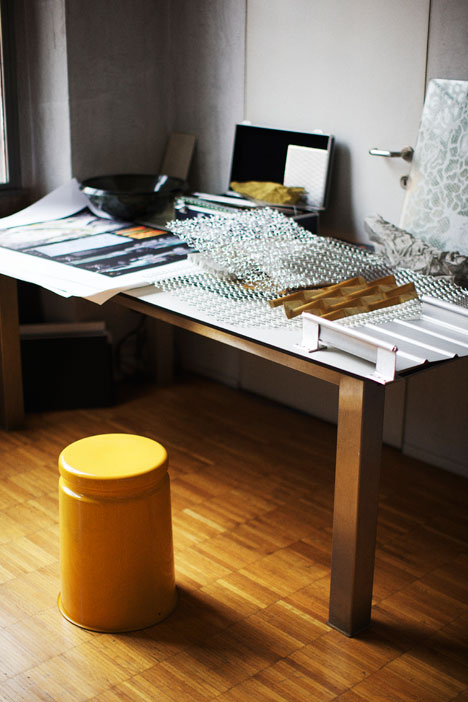
For the second episode of Living With, Discipline met up with the legendary Mario Bellini for an intimate conversation where the Milan based architect and designer described his artistic vision and the drive of his creative practice. With a long and successful career behind him, Bellini is as active today as never before. Awarded with a personal retrospective exhibition at the Museum of Modern Art New York already in 1987, during the years his prizes and awards have become almost uncountable, but Bellini is still keeping his feet firmly grounded.
With Discipline he shared his thoughts on design, describing his relationship to things through touch, smell and vision. In the same manner, Bellini himself seeks to design objects and spaces that are stimulating the fullness of our senses. Closely following Bellini during a day in his studio, we shared meetings, talks and drawing sessions, noticing how he kept returning to the importance of curiosity. Nursing a propeller of ideas, this seems to be what keeps driving the world renowned architect and designer to create, over and over again.
Here's the full interview transcript:
Discipline: Mr. Bellini, when did you find out that you wanted to work with design and architecture? Where does your need to express yourself with architecture come from?
Mario Bellini: Already as a child I was always carrying a pencil in my hand, and I never stopped sketching. The first thing I can remember designing was an ink bottle and a funnel made to look like humans, with legs, arms and hands. This explains almost everything about my practice; I have always mixed an anthropomorphic side into my objects. That could explain why I’m always searching for a human expression, an easily understandable structure of meanings. To me an object has a face, eyes, a mouth and expressions.
Discipline: Speaking about anthropomorphic shapes, what kind of role do materials or the sensibility of an object have in your work?
Mario Bellini: Whenever I approach an object I get curious, I want to touch it. You know how children want to put things in their mouth, they like to eat it to understand what the object is. I have this similar tendency to examine and touch it, looking underneath the table for example. I am also very curious about the material, I get crazy about looking at stones and marble and wood, always trying to classify them to remember their patterns and their shapes, colour and weight.
Discipline: This almost child-like curiosity to discover new things, does it apply to the making of your architectural projects?
Mario Bellini: I strongly believe that curiosity is propelling our search to understand our world and to modify our ideas. Without curiosity you cannot create things. When I was in high school and had to decide what to study at the university, I was looking to combine art with technics and engineering, and I found out that architecture combined those two elements.
While studying I started designing objects by chance, because in the Italian architecture schools you didn't learn about design. Already during the first year I got a gold medal, which led me to meet Mr. Olivetti, who offered me to join the studio to design their machines. So I did, got another gold medal, and then the Museum of Modern Art asked me to do the set up of my own exhibition in New York. So I did it, but at that moment I felt done with design.
I began with my architectural projects and within a year I started having commissions from Italy, followed by Japan and so on. Very normally, without much problem I started being an architect instead of a designer. I understand the difference between architecture and design, but I don’t find it very different; it feels natural to design a tray in the morning and to work on a huge building in the afternoon.
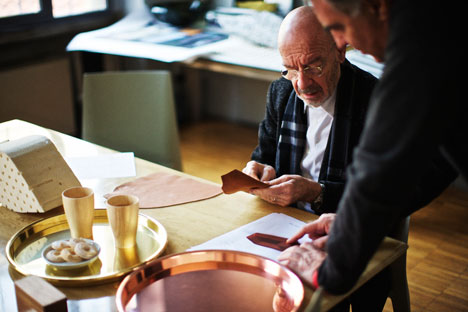
Discipline: When did you establish this office?
Mario Bellini: After a few years in my first place, I moved into a very nice studio in the 16th century building near San Babila, just next door to where Olivetti had their office. But after a while I had to leave and while I was looking around I found this abandoned factory with a friend. Together we restored everything from the roof to the underground parking lots, and this is where we are working today.
Discipline: How important is the working space to you?
Mario Bellini: I believe that you can do what you do wherever, in any other nation or place. But once you are in a certain place, you get something out of it. For example, in the two studios where I have been working with architecture, it became important to use them as a measuring tool. For instance, the old space had a 50 by 50 metre courtyard, a dimensional parameter that we used in our work. Now we have a 35 by 30 metre courtyard and the building is about 10-11 m tall, and so on. This is important to me, but my way of designing architecture didn't change when I moved from a 16th century building into a former factory.
Discipline: Do you have an urge to keep moving within your working space?
Mario Bellini: To work I only need to have a pencil and a piece of paper, but I sit anywhere the person who is taking care of the project sits. Once we used to cut out the models ourselves, today we are using renderings and a very sophisticated technique that is made by very smart, young guys. I don't understand which key to press, but I know what to ask for, which means I am always there, sitting near the guys making the rendering to change the details, colours and materials. We are building in our mind.
Discipline: How important is light and ambience for you in your work and space?
Mario Bellini: It is just as important as for a photographer or a film maker. Light is kind of a blessing that let dead material come alive. I am very sensible to contrast of light; light moving into shadow or reflective material. If I had to choose a school of painting I would pick Michelangelo, Tiziano or Tintoretto rather than Pinturicchio or Giotto, because I like the sculptural contrast and strong three-dimensionality created by light. If I had to chose between colour or light and shadow, I’d choose the latter.
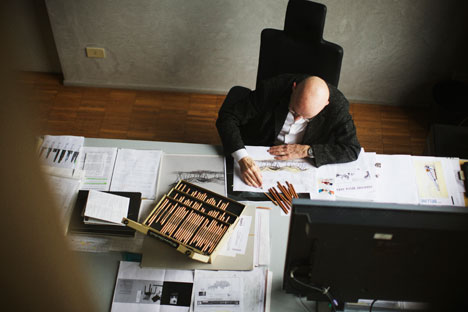
Discipline: How important is playfulness and excitement in your work?
Mario Bellini: I am always playing, which is not the same as joking, I am very serious while playing. At the moment I am designing a small architectural project, an object with strong colours that are reflected through curved silver materials – it is an endless play. Which doesn't mean even echoes doesn’t matter. A space is characterised of its echoes and noises, but also the smell is important. I cannot understand architecture critics who are writing about architecture through photos, without having been to the building.
Discipline: You seem to be very interested in innovation and innovative materials, but how important is routine for you?
Mario Bellini: I need adventures, and I could live anywhere. I’ve been travelling during the full month of August for the last 15 years, to all kinds of exotic places. Wherever I go I am always curious to eat something typical of the region.
Discipline: Do you relate food and architecture?
Mario Bellini: Food is architecture, just as everything has its own architecture. But I am quite sensible about the quality and the influence that an environment can project in your mood while you are eating, sitting, reading or sleeping. If I walk into a place it should be stimulating and interesting. For instance I like to eat outside under the sun, even in the cold months.
Discipline: So after all your traveling, are you happy to come home?
Mario Bellini: In a way yes, but since I’m being curious, I can change. I have moved several times. There is only one characteristic that is important - a garden, or at least a view of a garden, or the possibility to use it. The courtyard garden of my studio is very important for my work, to be able to follow the seasons.
I’m always appreciating the continuity of the inner space of a house or an office, and then to gradually feel outdoor. If I’m in a restaurant outside the city I always ask to eat outside, there is a strange combination of food that has been carefully prepared, and to enjoy it outside. In the end, we are animals, we should know where we come from. So our relationships with things, objects and spaces are made through our hands, nose and hearing. Designing things means to design something that is well prepared to stimulate the fullness of your senses. That’s why I feel so close to anthropological and anthropomorphic projects.